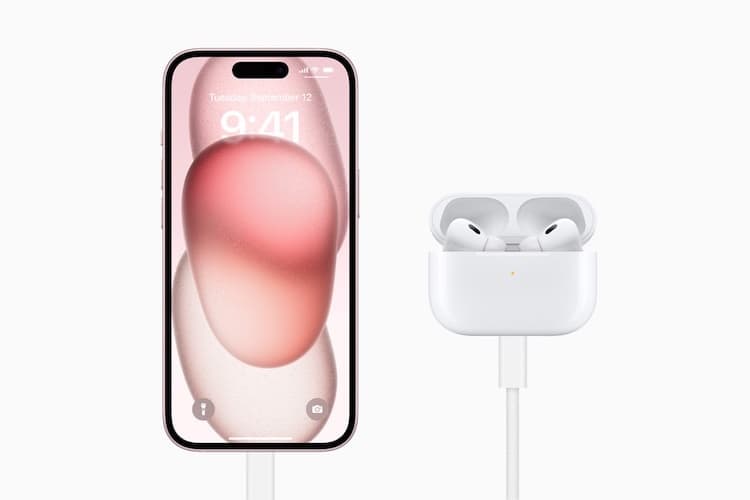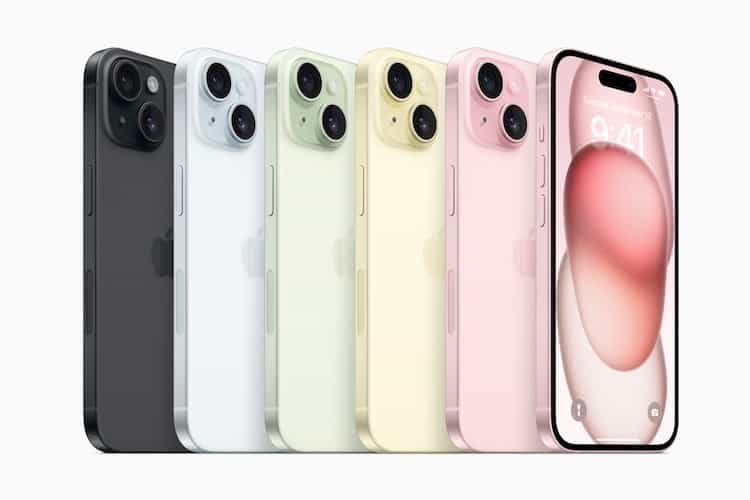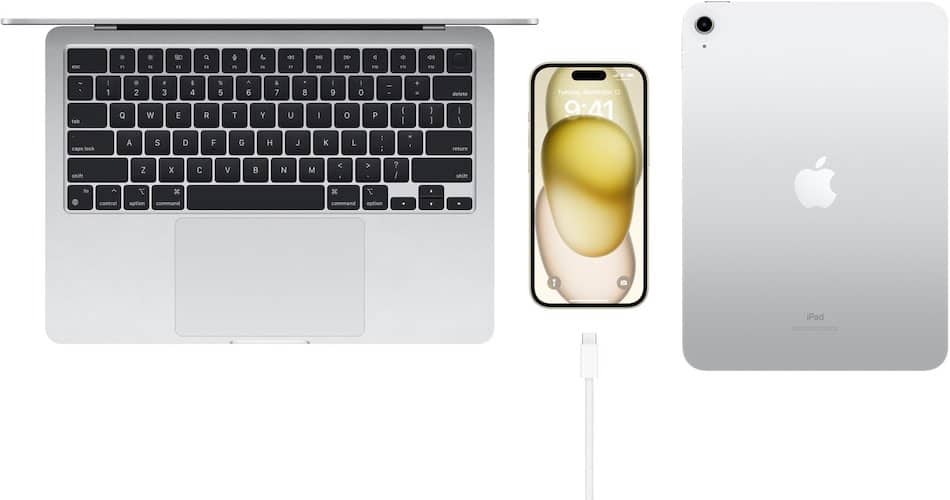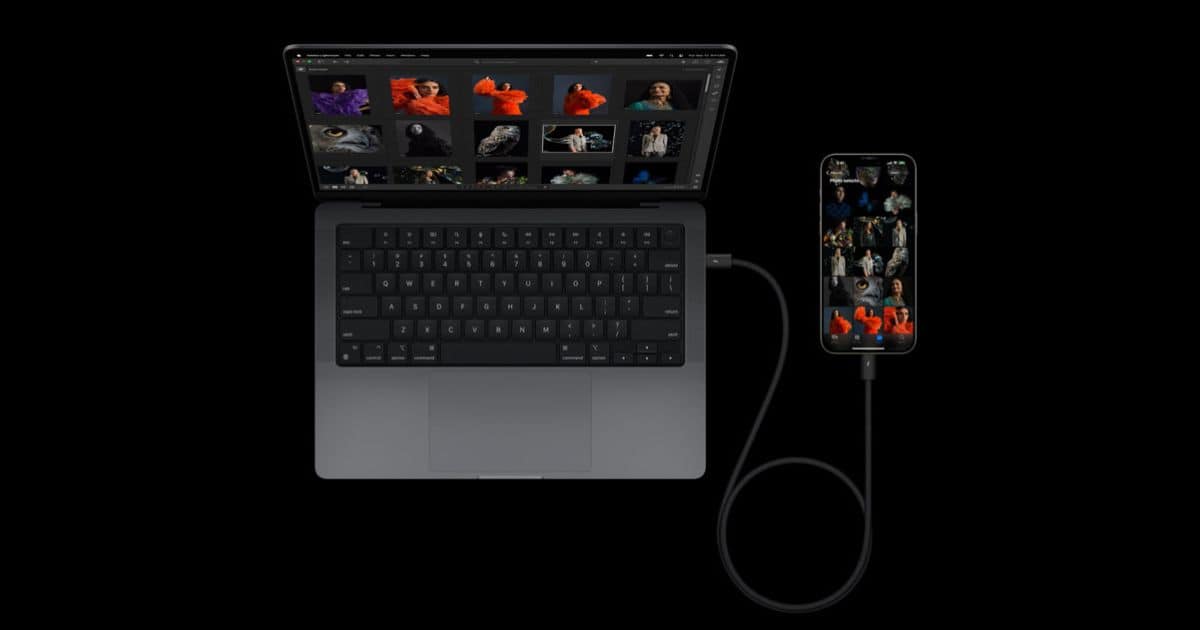Apple’s Wonderlust event brought about a wealth of exciting news for the iPhone community, including the switch from the physical Lightning port to a USB-C port. While some iPhone users may find this shocking, there are actually several reasons for the change. Though it will likely help you charge your device faster, there are some things you should know about USB-C charging. Let’s take a look.
What’s Changing?
The September 2023 Wonderlust event unveiled a wealth of Apple products, including the iPhone 15 series. One of the most revelatory factors is that Apple also announced all devices in the new iPhone 15 lineup will have USB-C charging. This also includes the Case for AirPods Pro. It seems Apple is finally ditching the Lightning connector.

Astute Apple fans should already be aware that iPads and MacBooks have been using USB-C charging for a while now. However, the Lightning port stayed with the iPhone until the release of the iPhone 15 series. While you will now have to replace your Lightning Cables and/or purchase adaptors, there are several reasons for Apple’s decision.
One of the largest reasons why this change is likely occurring is due to increasing pressure from international law. In Oct. 2022, the European Union passed a common charger rule, stating that smartphones must use a standard method of charging. Currently, this is USB-C. According to E.U. law, the iPhone needed to make the switch to USB-C by 2024, and the iPhone 15 series accomplishes that.
Going to the Source
In 2022, Greg Joswiak, Apple’s senior vice president of worldwide marketing stated,
“We have no choice, like we do around the world, to comply with local laws, but we think the approach would have been better environmentally and better for our customers to not have a government [have] that perspective”.
So while Apple is agreeing to the law, it seems the company would prefer different methods of making the change.
With the purpose of the new law imposed by the EU being to reduce the number of cables and chargers consumers need to deal with when purchasing an electronic device, Apple is abiding by the new law by making virtually all of its devices charge via USB-C. This includes AirPods receiving a new USB-C Charging Case as well.
Essentially, the EU wants consumers to be able to use just one charger for virtually any device. The new law also aims to reduce e-waste. However, this may initially be somewhat futile as consumers make the move to the new connection. No doubt users will need to get rid of their old Lightning Cables and replace them with USB-C, or use an adapter that Apple provides in its store.
From Lightning to USB-C
It was the fifth-generation iPod Touch, the seventh-generation iPod Nano, the fourth-generation iPad and the first-generation iPad mini that first received the Lightning connector way back in Sept. 2012. A means of replacing the original 30-pin dock connector, the 8-pin connector has a max transfer speed of 480 Mb/s and a design that is reversible.
The switch to USB-C does have some positives for consumers. Outside of a universal charging connector, the new connector is capable of far higher transfer speeds than a Lightning connector. Additionally, the switch to USB-C now allows users to charge their Apple devices with their other devices. For example, you can charge your Apple Watch Series 9 using your iPhone 15 Pro.

For Apple, one of the largest benefits of the Lightning connector is that it is capable of possessing an authentication chip that can make it difficult for third-party manufacturers to produce something that is comparable without aid from the company. Apple is then able to hold third-party companies to a higher standard.
In theory, making the switch to USB-C eliminates this, as USB-C typically has more of an open ecosystem. However, reports stated Apple will potentially provide faster charging through official products, and potentially slower charging for unofficial products, much like what happens with Mag-Safe accessories. Fortunately, reports from Ars Technica indicate that the USB-C port on an iPhone 15 is an industry-standard port.
Why Did Apple Switch to USB-C?
Apple made the switch to USB-C because it offers speeds up to twenty times faster than the tech found in the USB-2 Lightning connector. Additional factors for the switch include uniformity across devices, complying with EU law and helping reduce e-waste.
While Apple made the switch seem like it was totally a decision for users during the Wonderlust event, the EU law was likely a contributing factor toward the decision. Of course, a USB-C to Lightning adaptor is available directly from the company for those who need it.
What This Means for Users
The change to USB-C on iPhone may mean a lot to users. Some may already be looking forward to making the switch, while others may be hesitant to switch due to this decision. Ultimately, whether or not you want to make the switch to USB-C can depend on a couple of factors, including replacing your charging cables and faster transfer speeds.

However, consumers may want to pay attention to what USB-C cables they are using, as knockoffs can either provide too much or too little power. Sticking with official Apple products or anything with the “Made for iPhone” slogan will likely ensure that you are using a proper product.
While damaging your iPhone due to a bad USB-C cable is unlikely, it isn’t impossible. If anything, you will more than likely receive a warning from your device that the cable you are using is not supported. However, sticking with officially endorsed cables and chargers will eliminate this problem altogether.
What Does This Mean for The Future of The iPhone?
As mentioned, many, including the EU, view USB-C to be the current standard for charging smartphones and tablets. However, one interesting thing to consider will be what the future holds in terms of a common connector. While USB-C is likely to remain the current winner for the foreseeable future, it will be interesting to see how the EU and other territories and nations that have common charger laws will change and adapt these regulations as technology moves forward.
No doubt Apple will continue to do its best to adhere to local laws and customs. However, considering the U.S. has also considered its own common charger laws, it will be interesting to see how these regulations continue to evolve throughout the years.
Why Is Apple Switching to USB-C Port?
Essentially, Apple made the switch due to new international laws, as well as for iPhone users to receive faster transfer speeds. For professional photographers and videographers, the new speeds USB-C brings can increase workflow and get you back to editing and shooting.
USB-C on the iPhone is likely here to stay, meaning those who are hoping for a reversion back to the Lightning cable are likely out of luck. However, I believe the negatives far outweigh the positives. USB-C provides faster speeds, and Apple switching its other products to the standard means you no longer need multiple cables for multiple devices. While the initial switch may be annoying, as you may need to buy new accessories, the switch will provide an overall benefit for users.

“EU law was likely a contributing factor toward the decision”
Uh, no. It was THE factor. No USB-C meant zero sales in the EU. Zero.
It’s very important to understand EU democracy here. The EU decided that consumers don’t have a choice because big brother EU nanny state knows best. The EU doesn’t discuss, it demands. And it demands based on its own interests and even better it demands based on its own interpretation of what’s best. Thank god for Brexit!